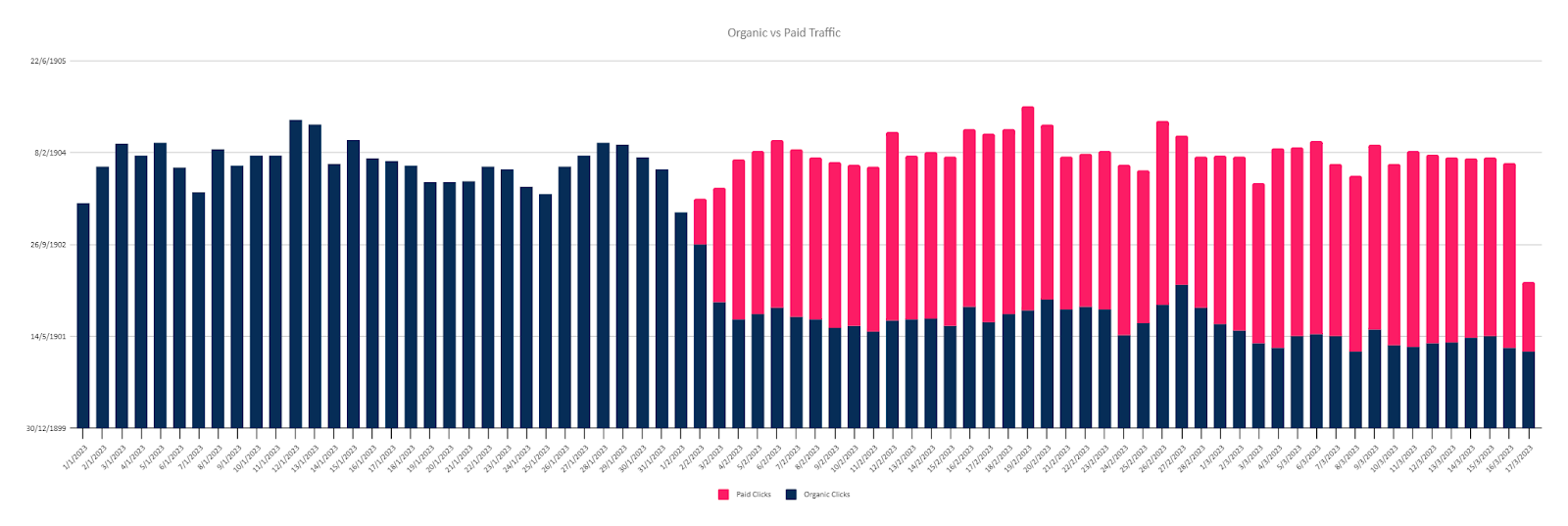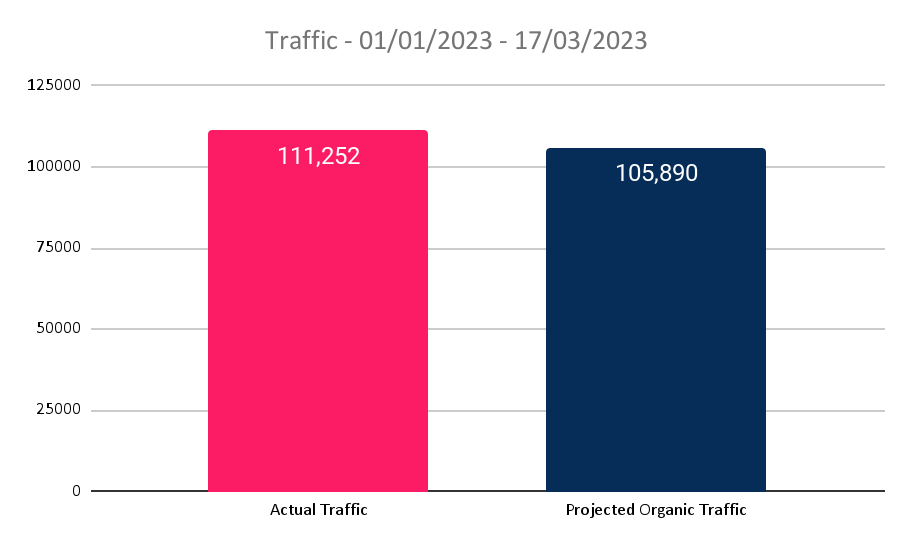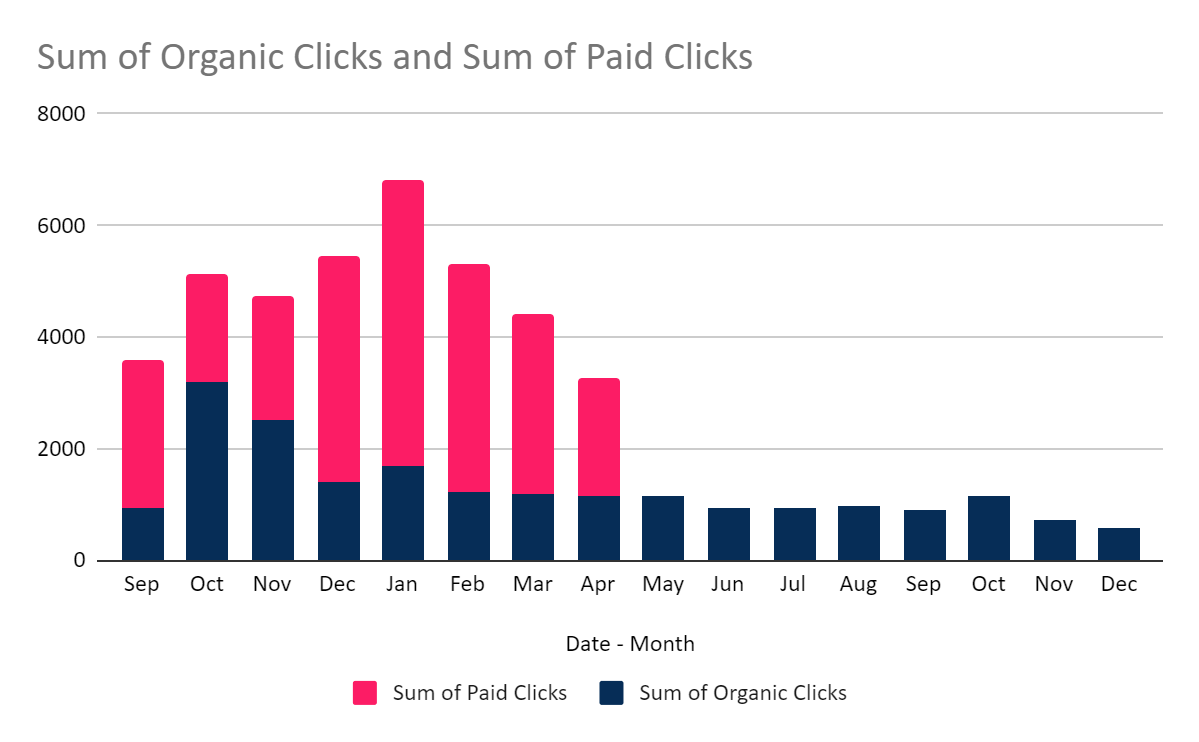Les entreprises veulent faire des bénéfices et améliorer leur retour sur investissement - elles cherchent continuellement à innover et à améliorer leurs performances tout en réduisant leurs coûts. La réalisation de gains d'efficacité sur Marketing Digital peut y contribuer et notre rôle à Artefact est d'aider nos clients à y parvenir.
Même en 2023, les équipes chargées du référencement naturel et du référencement payant travaillent souvent en vase clos, bien que les deux canaux soient intrinsèquement liés. Data montre que le taux de clics (CTR) pour les inscriptions organiques est meilleur que pour les inscriptions payantes, mais lorsque les moteurs de recherche affichent une publicité sur la page de résultats, le CTR pour le premier résultat organique chute de 30 %.1 Cela a un impact sur les performances organiques pour ces mots clés. Il existe de nombreux scénarios dans lesquels le fait de payer pour apparaître dans la page de résultats des moteurs de recherche (SERP) améliorera les performances globales et le retour sur investissement. Cependant, il y a aussi des cas où les sites web ont de bonnes performances organiques ; les dépenses pour ces mots-clés n'améliorent pas les performances globales et sont potentiellement gaspillées pour les publicités.
Ce que nous avons fait
Artefact a récemment effectué un travail sur l'un des marchés de Nissan dans le but d'améliorer l'efficacité de l'ensemble de la recherche (SEO x PPC). Notre hypothèse était que Nissan n'aurait pas besoin de dépenser pour des publicités de marque pure lorsqu'elle se classait en première position organiquement - libérant ainsi ce budget pour le dépenser ailleurs. Cependant, il y avait une mise en garde importante : cette approche ne serait fructueuse que s'il n'y avait pas d'autres publicités (concurrentes) apparaissant dans les SERP.
L'hypothèse a été testée sur un marché où elle a permis de réaliser des économies substantielles de plusieurs dizaines de milliers de livres, sans incidence sur les performances globales.
"Chez Nissan, nous cherchons à optimiser nos dépenses publicitaires à l'échelle mondiale afin de nous assurer qu'elles produisent les meilleurs résultats pour l'entreprise. Notre agence mondiale de référencement, Artefact, a été en mesure de mettre en évidence les domaines dans lesquels des économies significatives peuvent être réalisées sans avoir d'impact sur nos performances globales. Nous sommes enthousiastes à l'idée de lancer des tests similaires sur d'autres marchés et de créer une stratégie synergique de "recherche totale" pour l'avenir.Dip Shah, responsable mondial de la science de la conversion chez Nissan Motor Co.
La période de test a duré un peu moins de 3 mois (76 jours). L'activité payante a été activée pendant 44 jours et désactivée pendant 32 jours. Pour mesurer le succès de ce test, data de Google Search Console et Google Ads a été combiné et les CTR ont été contrôlés pour déterminer si le paiement par clic (PPC) apportait une valeur ajoutée.
Artefact a calculé le CTR organique moyen pour les jours où l'activité payante a été désactivée en multipliant le CTR organique par les impressions organiques. Ce résultat a été utilisé pour l'ensemble de la période afin d'estimer le nombre de clics organiques qui se seraient produits s'il n'y avait pas eu d'activité payante au cours de la période.
Cette estimation a été comparée au nombre réel de clics survenus au cours de la période (clics organiques plus clics payants) ainsi qu'au nombre prévu de clics organiques (CTR lorsque l'activité payante est désactivée multiplié par les impressions organiques pour l'ensemble de la période) afin d'évaluer si un trafic supplémentaire a résulté des dépenses PPC engagées.
Le graphique ci-dessous semble montrer qu'il n'y a pas une grande différence dans le trafic total lorsque le PPC est activé pour le mot-clé de marque pure "Nissan" par rapport à lorsqu'il est désactivé.

Ce graphique montre le trafic réel reçu pendant le test (clics organiques plus clics payants) comparé à une estimation du volume de trafic organique qui aurait été obtenu si l'activité payante n'avait pas été activée.

Le trafic organique prévu pour la période, comme le montre le graphique ci-dessus, était de 105 890, soit seulement 5 362 clics de moins que le trafic organique et payant cumulé réel (111 2525) atteint au cours de la période de test. Le fait d'avoir activé le PPC pendant cette période n'a donc permis d'obtenir que 5 362 clics supplémentaires.
L'activité payante ayant été activée, le résultat organique a été repoussé vers le bas de la SERP, ce qui signifie que le trafic payant a représenté 39 974 visites au lieu des 5 362 clics supplémentaires que les deux canaux ont générés ensemble. Comme indiqué, d'après les calculs de Artefact, si le PPC n'avait pas été activé, 34 612 de ces visites auraient été récupérées par le trafic organique. Cela signifie qu'en réalité, le coût par clic (CPC), qui aurait dû être de 0,23 £ pour chaque clic, était en fait de 1,71 £ pour chaque clic supplémentaire obtenu grâce à l'activité payante.
Tester des scénarios alternatifs
Un test similaire avait été effectué précédemment sur un terme de recherche de modèle, "Nissan Qashqai", avec des résultats différents. Ce test a utilisé la même méthode que celle décrite ci-dessus, mais en raison du plus grand nombre de sites data disponibles, il a été réalisé sur une période de 16 mois.
Les résultats de ce test, présentés dans le graphique ci-dessous, montrent que lorsque l'activité PPC est activée pour le mot-clé "Nissan Qashqai", le trafic total vers le site est bien plus élevé que lorsque l'activité payante est désactivée et que l'on se fie uniquement au trafic organique. Sur cette période de 16 mois, l'activité PPC a envoyé 25 590 clics supplémentaires sur le site de Nissan qui n'auraient pas été pris en compte par les résultats de recherche organiques de Nissan. Cela peut être dû à une multitude de facteurs potentiels, y compris (mais sans s'y limiter) l'activité PPC des concurrents, l'intention de la recherche et la performance du site web de Nissan dans les résultats organiques.

Les deux tests ont donné des résultats très différents. Pour le terme de recherche "Nissan", Artefact a recommandé de désactiver le PPC, alors que pour le terme de recherche "Nissan Qashqai", il a été recommandé de maintenir le PPC. Artefact a obtenu des résultats similaires lorsque d'autres termes de modèle ont été testés. Les concurrents enchérissaient systématiquement sur les mots clés des modèles, ce qui rendait le PPC de Nissan essentiel.
Bien que Artefact ait déterminé que le PPC de marque pure pouvait être désactivé pour le terme de recherche de marque pure, cette conclusion peut ne pas être valable si un concurrent enchérit sur le terme de marque pure. C'est pourquoi le CTR organique pour ce terme de recherche est surveillé et utilisé pour indiquer l'activité des concurrents.
Ce que nous avons appris
Avant de réaliser ce test, Artefact savait que la synergie entre le payant et l'organique est primordiale pour une stratégie Marketing Digital efficace. Ce que le test a validé, c'est que toutes les campagnes synergiques sont uniques. Un suivi et des tests stricts sont essentiels pour trouver le bon équilibre et améliorer le retour sur investissement global. Il n'existe pas d'ensemble de règles standardisées à suivre, car trop de facteurs entrent en jeu. Il doit y avoir une relation forte et transparente entre les équipes qui gèrent les stratégies payantes et organiques et elles doivent avoir une compréhension experte du paysage de la recherche pour s'assurer que data est interprété correctement et que les bonnes décisions sont prises.

 CAS CLIENTS
CAS CLIENTS





